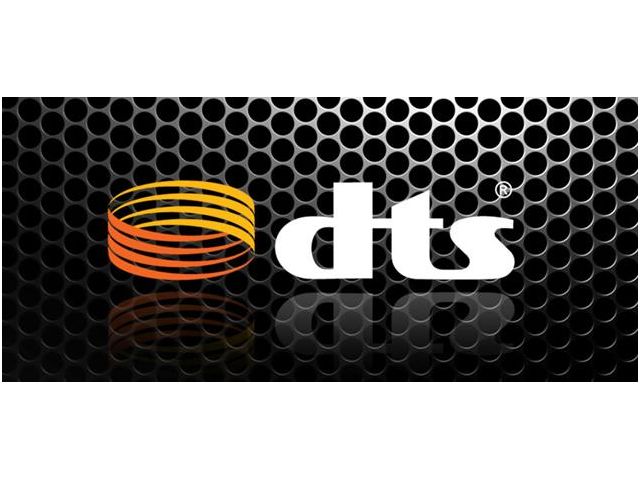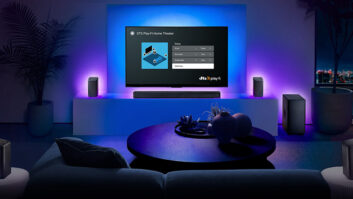
DTS’s future growth will come from increased HD Radio penetration in cars, additional Play-Fi wireless-multiroom SKUs, and new mobile phones and tablets shipping with DTS audio technology, DTS chairman/CEO Jon Kirchner said in an investors conference call.
The gains will come as revenues from the company’s home-A/V and Blu-ray segments continue to decline as a percentage of total revenues, he said. The segments include revenue from licensing DTS’s surround-sound and audio technologies for use in home-A/V products, game consoles, Blu-ray players and Blu-ray discs.
In “looking at the relative falloff of things like small volumes of A/V receivers as well as home-theater-in-a-box type systems,” the home segment “will continue to decrease in favor of these other markets,” Kirchner said. ”So I think we’ve got a plan that’s well positioned to tap the areas that are truly growing, and I think we’ll see declining exposure to some of the stuff we’ve done historically.”
Revenue breakdown: In 2015, Blu-ray revenues accounted for more than 20 percent of company revenues despite a 10 percent volume drop. Blu-ray’s share will fall to less than 15 percent in 2016, Kirchner said.
Home-A/V revenues in 2015 accounted for about 10 percent of revenues, and that will fall to less than 10 percent in 2016.
Automotive revenues were up 21 percent for the year and represented about 20 percent of revenues in the fourth quarter following the October acquisition of HD Radio developer iBiquity Digital. Automotive’s share will rise to a little less than 40 percent in 2016.
TV licensing revenues were up 6 percent in 2015, but PC revenues fell 18 percent for the year.
In 2015, “we experienced greater than expected softness in Blu-ray and home A/V,” Kirchner said. “These markets are in long-term decline. However, a delay in transition to next-generation [DTS:X] technology has also negatively impacted these markets last year.”
“While Home AV and Blu-ray represent an ever smaller portion of our business, these products have strategic importance to the industry as launch vehicles for new technology,” he added.
DTS:X: On the home-video side, a number of major studios have committed to releasing multiple Ultra HD Blu-ray titles with DTS:X soundtracks, DTS said. That follows the 2015 launch of DTS:X on Blu-ray discs of such films as “Ex Machina,” “American Ultra” and “The Last Witch Hunter,” DTS said.
2016 will be a “milestone year” for DTS:X as more than 60 DTS:X AVRs, AVPs and soundbars become available by the end of the year across a “multitude” of brands and price points, the company said.
For cinema releases, 12 movies were released last year in DTS:X with four releases in China since the beginning of the year and six Hollywood film commitments so far, the company said. DTS also expects “significant screen growth” over the current 70+ screens featuring or committed to featuring DTS:X, he added.
Play-Fi: The company expects Play-Fi revenues to grow as new companies sign up for the technology and other licensees get past issues that caused “a number” of partners to push back launch dates in 2015, the company said.
Both Klipsch Group and Rotel Electronics have “selected Play-Fi to be their wireless solution,” the company said, and Dish Network has demonstrated Play-Fi integration in its networked Hopper DVR. The Dish Music app converts the Hopper into a Play-Fi music zone, DTS explained.
Last year, “a number of our [Play-Fi] brand partners pushed out product launch dates due to technical issues, some marketplace confusion caused by new entrants, and the availability of certain content service support,” Kirchner said. However, at year-end, “most of these brand partners began selling Play-Fi capable products online.”
“Equally important, we’ve seen some customers abandon competing solutions and return to evaluations of Play-Fi technology,” the company added. “It is clear that in the long run, the wireless audio space is only likely to support a few dominant ecosystems, and we believe Play-Fi will be one of them.”
Mobile: In 2015, DTS signed contracts for 100 million smartphone units with the top five smartphone manufacturer and launched Headphone:X virtual-headphone surround technology on the phones, the company said.
DTS earlier this year announced the expansion of its mobile solutions into emerging markets through partnerships with leading Indian mobile manufacturers Micromax, SmarTone, and OBI Mobile. And at the recent Mobile World Congress, DTS made its “strongest showing yet” with a dozen phones from five different manufacturers displayed with DTS technology.
Automotive: iBiquity had been posting net operating losses when it was acquired from investors, including radio-broadcast chains, but DTS has “made significant progress realizing operational and financial synergies,” Kirchner said.
DTS expects to move HD Radio technology “out of the premium priced segment into the more midpriced segment” while it works on more effective cost implementations on ICs that will hit the market in the next couple years, he said.
HD Radio penetration reached about 37 percent of new cars sold in the U.S. in 2015 and is “well-represented as a standard feature among the higher end of the automotive segment as well as in premium infotainment systems and more moderately priced vehicles,” he noted.
DTS sees HD Radio as an opportunity to bring its other audio technologies into the car. Once HD Radio content is in the car, “there is an opportunity for DTS’s other technologies to enhance the presentation of that content inside the vehicle,” Kirchner explained.
The move to autonomous cars will have a positive impact on these efforts, Kirchner added. Autonomous vehicles “will begin to change the opportunity for more immersive entertainment experiences in the vehicles as you no longer have to focus on perhaps controlling the vehicle and can simply maximize the time and experience while you’re in it,” he explained.
Kirchner also pointed out that DTS has identified more than $50 million in accumulated net operating losses that can be used to reduce taxes over the next several years.
Sales forecast: Company sales fell 4 percent in 2015 to $138.2 million, and the company posted a net loss of $12.3 million compared to the previous year’s $27.1 million net income. Revenues in 2016 are forecast at $180 million to $190 million.
See this SeekingAlpha transcript for full details of the company’s comments.












